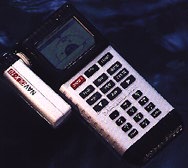
By : Captain Rod & Susie Stebbins
This article is produced in cooperation with Magellan Systems Corporation, 960 Overland Court, San Dimas, CA 91773. Without this collaboration, this article might have gone on forever to try to explain the magic of satellite positioning, encrypting reasoning and communications. Their significant contributions in this venture are greatly appreciated.
The Owners :
The Global Positioning System (GPS) is a constellation of 24 satellites that orbit the earth twice a day, transmitting precise time and positioning information to anywhere on the globe, 24 hours a day. The system was designed and deployed by the U S Department of Defense to provide continuous, worldwide position and navigation data for the use of the United States and allied military forces.

 signal is an encrypted military-access code. The SPS signal is an unencrypted, spread-spectrum signal broadcast at 1575.42 MHz. Unlike signals from land-based navigation systems, the SPS signal is virtually resistant to multipath and night-time interference, and is unaffected by weather and electrical noise.
signal is an encrypted military-access code. The SPS signal is an unencrypted, spread-spectrum signal broadcast at 1575.42 MHz. Unlike signals from land-based navigation systems, the SPS signal is virtually resistant to multipath and night-time interference, and is unaffected by weather and electrical noise.